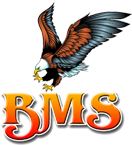Chiller Preventive Maintenance Service in The DC Metro Area
We perform all maintenance procedures and inspections at the recommended intervals. This will prolong the life of the chiller and minimize the possibility of malfunctions. Use an “Operator’s Log” to record the unit’s operating history. The log serves as a valuable diagnostic tool for service personnel. By observing trends in operating conditions, an operator can anticipate and prevent problem situations before they occur. If the unit is not operating properly during maintenance inspections, consult the “Diagnostic and Troubleshooting” section of this manual.
Chiller Weekly Maintenance
Verify that compressor oil sump heaters are connected tightly around the compressor. After the chiller has been operating for approximately 30 minutes and the system has stabilized, check the operating pressures and temperatures and complete the following.
Checks
Check the evaporator and condenser refrigerant pressures in the Refrigerant Report menu of the CH530 display. Pressures are referenced at sea level (14.6960 psia). Check the electronic expansion valve sight glasses. (Note: The electronic expansion valve is commanded to close at unit shutdown and if the unit is off, there will be no refrigerant flow through the sight glasses. Only when a circuit is running will refrigerant flow be present.)The refrigerant flow through the sight glasses should be clear. Bubbles in the refrigerant indicate either low refrigerant charge or excessive pressure drop in the liquid line. A restriction in the line can sometimes be identified by a noticeable temperature differential between the two sides of the restriction. Frost may often form on the liquid line at this point. Correct refrigerant charges are shown in the General DataTables.
Monthly Maintenance
Complete all weekly maintenance procedures. Measure and record the evaporator superheat. Refer to “Evaporator Superheat.”Measure and record the system subcooling. Refer to “System Subcooling.” Manually rotate the condenser fans to ensure that there is proper clearance on the fan shroud openings.
Annual Maintenance
Complete all weekly and monthly maintenance checks. Check the oil level and refrigerant charge. Routine changing of oil is not required. Have a qualified laboratory perform a compressor oil analysis to determine system moisture content and acid level. This analysis is a valuable diagnostic tool. Contact a qualified service provider to leak test the chiller, check operating and safety controls, and inspect electrical components for proper operation. Leak testing may be accomplished using soap solution or with electronic or ultrasonic leak detectors. inspect all piping components for leaks and damage. Clean all water strainers.
Oil Level
Oil should also be visible in the sight glass when the compressor is running. When operating, each compressor in a tandem or trio set may have a different oil level. To check the compressor oil level, refer to the label near the compressor sight glass. The compressor(s) must be off. Wait three minutes. With tandem or triple compressors, the oil level will equalize after shutdown. The compressor oil level should be clearly visible within the sight glass when the compressors are off.



